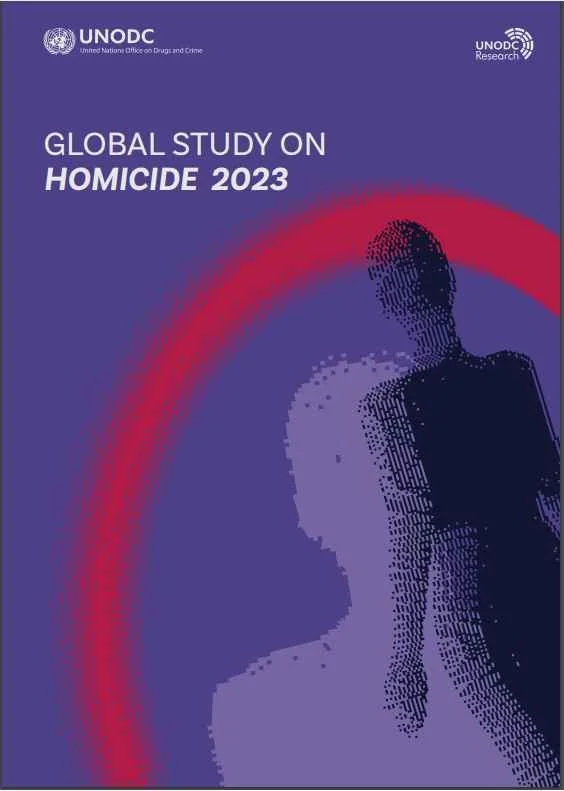By The United Nations Office on Drugs and Crime, Research and Trend Analysis Branch
Preventing and reducing homicide means sparing hundreds of thousands of lives lost to violence every year. To do that, we must understand the complex and highly diverse range of threats and phenomena that drive and intersect with such lethal violence – from interpersonal dynamics to organized crime and rule of law to climate change, poverty and inequality to demographics, and much more – and how they differ across national and regional contexts. This Global Study on Homicide is an effort to reveal and delve into the facts behind the violence, to try and identify notable trends and to inform policies and solutions. The Study shows that 2021 was an exceptionally lethal year, with an estimated 458,000 intentional homicides worldwide, averaging 52 killings every hour. The global homicide rate was at 5.8 for every 100,000 persons, a number that sadly reflects little progress in reducing lethal violence worldwide since the launch of the 2030 Agenda for Sustainable Development in 2015. The biggest share of the victims were killed with firearms, which accounted for 47 per cent of homicides committed with a known mechanism worldwide. That number rises to 75 per cent in the Americas, which has the highest homicide rate in the world, and where organized crime is responsible for at least half of all homicides. In different parts of the world, organized crime can lead to spikes in homicide, particularly as criminal groups compete for control. Organized crime has also had an impact on homicide rates in Europe. While the regional homicide rate has decreased over the last six years, there are signs of increased lethal violence connected to organized crime in various countries of the continent. Such organized crime-related killing – and all homicidal violence, in all parts of the world – is far more likely to be committed by, and against, men. Men account for 81 per cent of the victims of intentional homicide globally, and around 90 per cent of the suspects. Women, on the other hand, are more likely to be killed because of their gender, and more likely to lose their lives to violence at home. Women account for the victims in 54 per cent of killings in the home, and 66 per cent of intimate partner killings. Many people are also killed because of what they do, including human rights defenders, humanitarian workers, journalists, and environmental activists. The current global situation, characterized by growing conflicts and rule of law challenges, is fuelling such sociopolitical homicides, which in many cases happen with impunity. Given the broad and diverse factors driving lethal violence around the world, effective responses to homicide must cover a wide spectrum of context-specific interventions. Some interventions will be designed to reduce genderbased violence against women and girls, others will be geared towards reducing organized crime and gang violence, and others still may focus on firearm laws and regulations, vocational training to at-risk demographics, or mental health interventions. But all responses must share common threads, namely the need to be based on evidence, the need to prioritize prevention and address root causes, and the need to invest significantly. Investing in homicide prevention and responses is of particular priority in Africa, which this Global Study projects to be the most at-risk region over the coming decades, in large part due to its younger population, economic inequality levels, climate vulnerability, and weaker response capabilities. This study also highlights the significant limitations in the information available across regions, and the need to invest in better data collection. It is highly important to understand the types of homicide in any given context, whether family-related, gang-related, or any of the other identified typologies, yet more than a third of all detected homicides are classified as “unknown”. Similarly, four out of every ten killings of women and girls do not have information on the victim-perpetrator relationship, despite the prevalence of intimate partner killings against women and girls.
Vienna/New York: United Nations Office on Drugs and Crime; Research and Trend Analysis Branch, 2023. 155pp; December 2023



